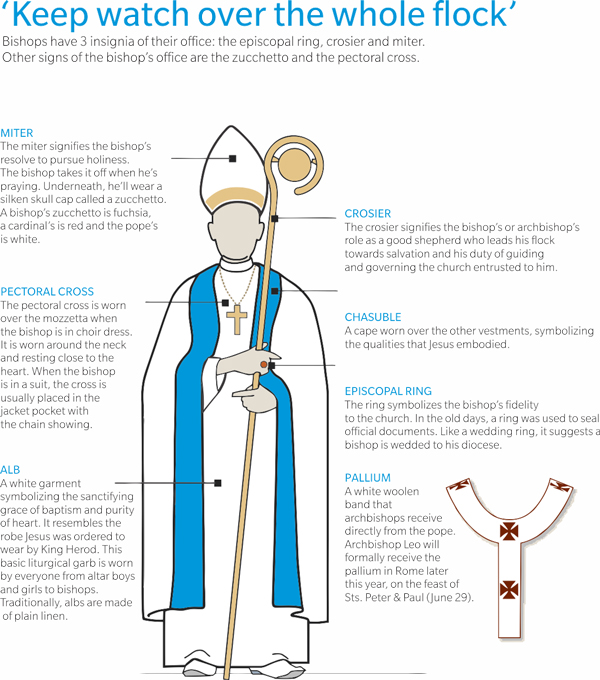
Since Bishop Harris will be here May 19, it is a good chance to look at how we got bishops in the first place. Without distinctive “gear” we wouldn’t know them from regular priests.
Our church name, Episcopal is taken from the collective group of bishops in a church.
The concept of a bishop developed gradually in the early church as an overseer but by the 1st century became established as the head of the house churches in a city. The bishop became less associated with a particular church. A single bishop was expected to lead the church in each center of Christian mission, supported by a council of presbyters (a distinct and subordinate position) with a pool of deacons
Faith Magazine provides a good run down of the bishop adornments:
Crosier: The bishop carries a tall hooked staff called a crosier. In the Western church, it is shaped like a shepherd’s crook to symbolize the bishop’s role as the shepherd of his flock. Its roots go back to the walking staffs of travelers at the time of Christ, and crosiers dating from as early as the fourth century have been found in the catacombs. By the Council of Toledo in 633, the crosier was mentioned as a liturgical implement.
Miter: The miter is the tall peaked hat that bishops wear. It has its origin in the cap with headbands worn by athletes of ancient Greece. It took its current form in the 12th century. The miter/s two shield-shaped halves are said to represent the Old and New Testaments. Two strips of fabric called lappets hang down the back. The lappets were originally designed to be tied around the chin to prevent the miter from falling off while the bishop rode on horseback. The miter is laid aside when the bishop prays, and underneath it he wears a zuchetto, a skullcap originally designed to keep hair oil off the miter.
Pectoral Cross: The bishop wears a cross called a pectoral cross. Its name derives from the Latin word pectus or “breast.” It is worn differently, depending on the bishop’s garments. For example, if he is in a suit and collar, the pectoral cross is usually placed in the vest pocket, with the chain showing. That’s why you’ll often see the bishop with a gold chain across his chest. The cross can hang from either a chain or silk cord, and many of them held relics of the True Cross. The stone assigned to bishops and archbishops is the amethyst, and many pectoral crosses are adorned with one or more.
Episcopal Ring: Bishops wear a ring that has multiple layers of meaning. It has been a symbol of authority and jurisdiction since the third century. The ring also symbolizes the bishop’s marriage to the church, his spiritual parentage and the inviolable faithfulness with which he will teach and protect his flock. This onyx ring was used by Bishop Povish.
